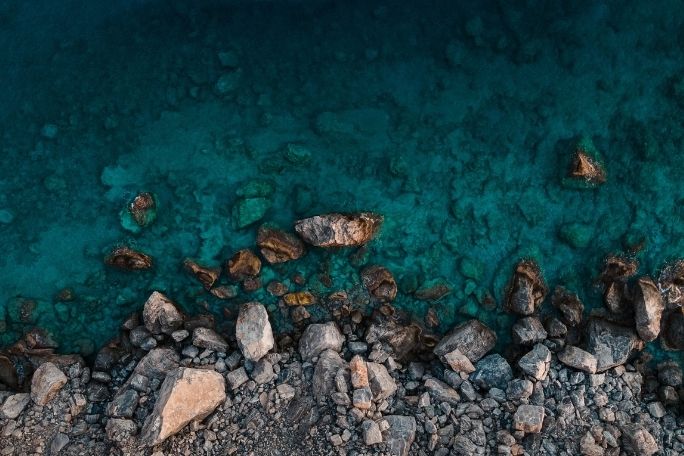Lesson summary
Students explore how nature makes them feel, the Australian places in nature that they love, and how these places might be affected by climate change. Students begin this lesson by participating in a mindfulness walk through nature, observing their responses to nature. They are then asked to look at and compare holiday photos of their parents/caregivers with pictures of places they love, discussing the reasons why these places are special and speculating on how these places may have changed over time.
Students will then look at a range of other images of special places in Australia, and investigate how climate change might affect the place they love and their experience of it.
Finally, students will write an article to describe the place they love, how it will be affected by climate change, how Earth Hour is featuring the places we love in their campaign, and why people should participate in Earth Hour. Note: Year 7 students will look at Australian places with water that they love; Year 8 students will look at Australian landscapes that they love.
This lesson has been translated into Mandarin for intended use in a LOTE class.
快速总结: 学生探索自然让他们感受的方式,他们喜欢澳大利亚自然景点,这些地方可能如何受到气候变化的影响。学生通过参与一个有意识地走进大自然开始这节课,观察他们对自然的反映。要求他们看照片,比较自己父母或监护人他们喜欢的地方,讨论这些地方是特别的原因,推测这些地方如何随着时间的推移可能会改变。学生将会看看其他一系列的图,比如在澳大利亚特别的地方,调查气候变化如何影响他们的爱和经历过的地方。最后,学生们将写一篇文章描述他们喜欢的地方,它将如何受到气候变化影响,地球一小时2016年活动是如何展示我们爱的地方,以及为什么人们应该参与2016年地球一小时。注意:7年级学生将看澳大利亚与水有关的地方; 8年级学生将看澳大利亚的风景。
Essential questions:
- How do we value our environment?
- How do people’s reliance on places and environments influence their perception of them?
- How do environmental and human processes affect the characteristics of places and environments?
- What are the consequences of changes to places and environments and how can these changes be managed?
基本问题:
- 我们怎么样评价我们的环境?
- 人民对地方和环境的依赖如何影响他们的看法?
- 环境和人类的过程如何影响地方和环境的特征?
- 地方和环境变化的后果是什么,这些变化是如何管理的
Lesson guides and printables
Curriculum links
Select your curriculum from the options below.
Lesson details
Curriculum mapping
Australian Curriculum content descriptions:
Year 7 Geography:
- Economic, cultural, spiritual and aesthetic value of water for people, including Aboriginal and Torres Strait Islander Peoples and peoples of the Asia region (ACHGK041)
- Reflect on their learning to propose individual and collective action in response to a contemporary geographical challenge, taking account of environmental, economic and social considerations, and predict the expected outcomes of their proposal (ACHGS054)
Year 8 Geography:
- Spiritual, aesthetic and cultural value of landscapes and landforms for people, including Aboriginal and Torres Strait Islander Peoples (ACHGK049)
- Reflect on their learning to propose individual and collective action in response to a contemporary geographical challenge, taking account of environmental, economic and social considerations, and predict the expected outcomes of their proposal (ACHGS062)
General capabilities: Literacy, Critical and Creative Thinking, Personal and Social Capability.
基本能力:识字,批判性和创造性的思考,独立和合作的能力。
Cross-curriculum priority: Sustainability OI.6, OI.7, OI.9.
跨学科优先权:Sustainability OI.6, OI.7, OI.9.
Unit of work: Earth Hour – Secondary.
工作单元:地球一小时 – 中级
Time required: 60 mins x 2.
时间需求: 60分钟 x 2
Level of teacher scaffolding: Medium – oversee activities and facilitate discussions.
教师基架级别:中等 – 监督活动和促进讨论
Resources required
- Student Worksheet – one copy per student OR computers/tablets to access the online worksheet
- Device capable of presenting a website to the class
- One copy of Rake worksheet for each student. Earth Hour 2016 – Place We Love – Images
- Article Writing Tips
- Article Assessment Rubric.
- 所需资源: 学生表 – 每个学生一个副本或电脑/平板电脑访问在线工作表。能够向全班展示网页的设备。每位学生一份Rake 思考工具工作表。地球一小时 2016 – 我们爱的地方 – 图片. 文章写作建议. 文章评估红笔.
Additional info
This lesson has been created in partnership with WWF-Australia. Earth Hour is the world’s largest community-driven climate change campaign. At the centre of Earth Hour is switching off lights to show a commitment to taking action.
Thousands of teachers use Earth Hour’s education program to enrich their curriculum and provide pathways for young people to create change in their world.
For the most up to date Earth Hour dates, times, and events, check here.
2020年,澳大利亚的地球一小时将庆祝我们爱的地方。这些地方让我们的假期,户外生活方式和澳大利亚的生活方式如此美好: 我们惊艳的海滩,河流,珊瑚礁,雪山,农村地区和国家公园,这些让澳大利亚成为与众不同的“幸运国家”。你可以成为活动的一部分,开始对气候变化采取行动。通过访问earthhour.org.au注册熄灯或找到你的本地事件。注册参加3月27日(周五)的地球一小时学校活动日,同时,别忘了在地球一小时,3月28日(周六)晚上8:30-9:30关灯。


Welcome back!
Don't have an account yet?
Log in with:
Create your free Cool.org account.
Many of our resources are free, with an option to upgrade to Cool+ for premium content.
Already have an account?
Sign up with:
By signing up you accept Cool.org's Terms and Conditions(Opens in new tab) and Privacy Policy(Opens in new tab).